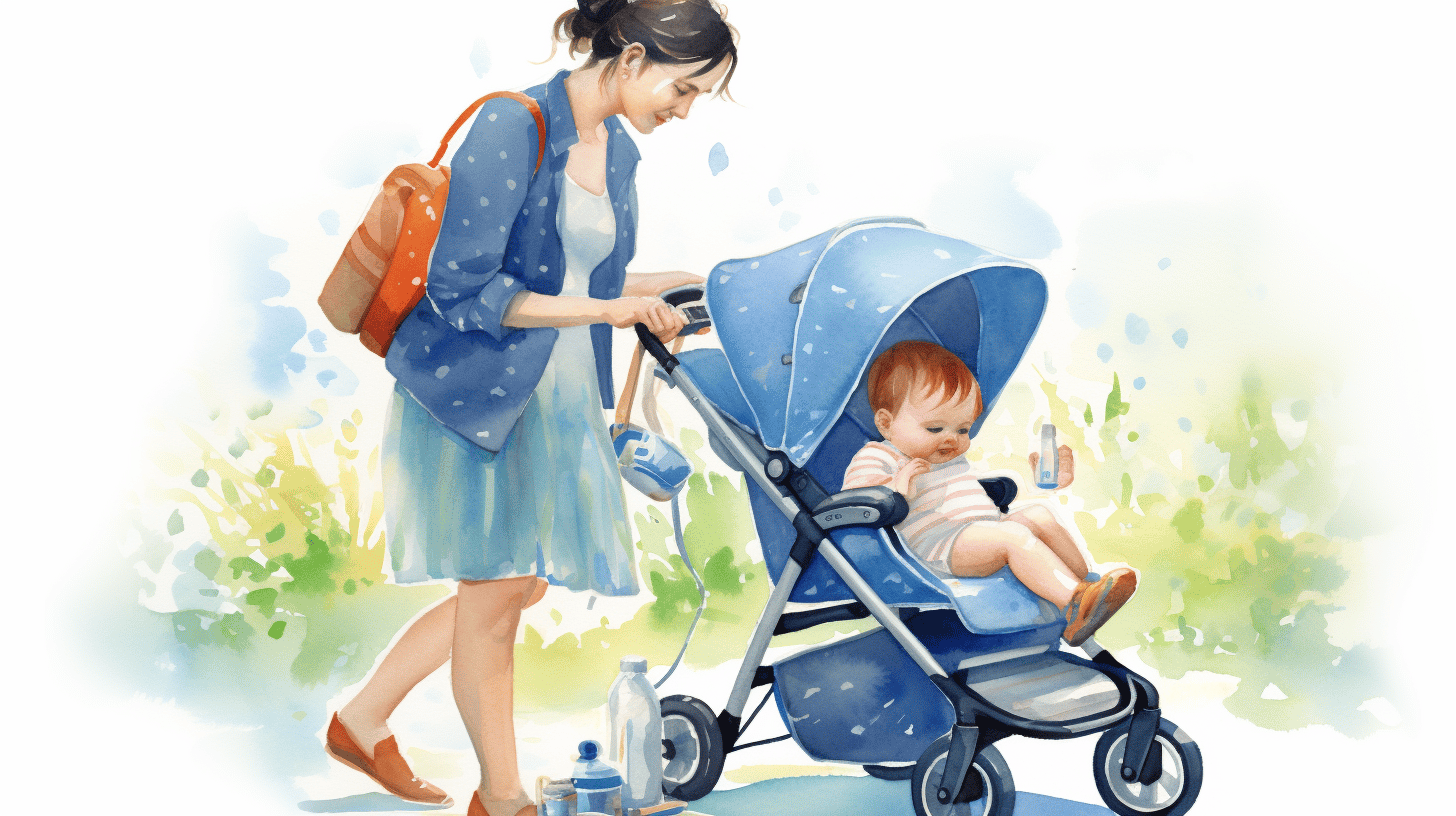Stepping outdoors is like immersing ourselves in a wondrous world brimming with adventure and possibilities. From the sapphire-blue morning sky to the emerald-green neighborhood park, everything waits to be explored. As stay-at-home moms, we know that fostering this love for the outdoors in our children is not merely about amusement, it's also about teaching them to appreciate the beauty of nature, the spirit of exploration, and, importantly, the art of staying safe outside. So, buckle up ladies! We're about to embark on a journey towards understanding outdoor safety for not only our little explorers but for ourselves as well.
Increasing Engagement in Outdoor Recreational Activities
It’s no secret; more of us are heading outdoors than ever before. Hiking trails, lakesides, and campgrounds have become our collective sanctuary. And, guess what? We've got the numbers to prove it. In 2022 alone, the outdoor recreation participant base surged by 2.3% reaching a groundbreaking record of 168.1 million participants. But we believe there's even more potential to bolster these figures. So, are you ready to be a part of this growing trend?
Breaking away from the confines of our homes and reconnecting with nature delivers incredible benefits to our physical health and mental wellbeing. But the real magic lies in the relationships we foster — with ourselves, with others, and with the great beyond of "greens and blues".
Exploring the Fantastic Outdoors
There's a myriad of outdoor activities that can bring us closer to nature, from the adrenaline-inducing rush of rock climbing to the tranquillity found in forest bathing. Links to these outdoorsy pursuits include:
- Hiking: This is an excellent way to get a full-body workout while experiencing the wonders of nature.
- Camping: It's the essence of immersing one's self entirely in the wild, providing you with a unique opportunity to disconnect from the hassle of technology and come back to your roots.
- Kayaking and Canoeing: The epitome of water lovers, where you work out your upper body and seamlessly glide on serene waters.
Whatever the activity you choose, it's aimed at getting us to appreciate the glorious outdoors, breathe in the fresh air, and give our bodies the activity they crave.
The Allure of Fresh Air
Our sedentary lifestyles have had profound effects on our health, making outdoor recreational activities even more crucial. The outdoors offers numerous health advantages:
- It aids in reducing stress.
- It helps boost mood and happiness levels.
- It can enhance focus and creativity.
- It promotes physical fitness and weight management.
Involve, Engage, Inspire
The path to increased engagement in outdoor recreational activities isn't as complicated as we might believe. It involves fostering a culture that values these activities, providing adequate resources so everyone can participate, and, most importantly, inspiring a genuine love for the outdoors.
"Engagement" shouldn't be perceived as a mere term; rather it's the passionate pursuit of interests. Let's collectively aspire to make that a reality!
At the end of the day, increasing outdoor activities engagement starts with us. We must realize the immense riches the great outdoors have to offer, then plan, participate, and promote these activities at all levels. It's not about changing the world; it's about making our lives a bit more adventurous and enriching our experiences each day.
Statistics on Sports and Recreational Injuries
How often have we put off something, saying, "I'll just wait until the risks are low?" The truth is, in life, almost everything involves a certain degree of risk. This is true even in the world of sports and recreational activities. Nevertheless, engaging in physical activities remains incredibly beneficial for our health and wellness, despite the potential risks of injuries. In this article, we dive into the statistics on sports and recreational injuries, shedding light on this significant yet often overlooked aspect of our activities.
The bitter truth we need to swallow is that sports and recreational injuries have been on the rise. Data demonstrates a disheartening trend – sports and recreational injuries increased another 12% in 2022. This surge follows a 20% increase recorded in 2021, which calls for our attention and necessary precautions.
An increase of such magnitude may initially seem daunting and can leave us wondering about the causes behind this spike. Several factors contribute to this situation, such as inadequate conditioning, improper use of protective gear, overexertion, and even ignoring the rules of a game.
Given these pitfalls, it's important that we adopt preventative measures to curb these escalating injury rates. Here are some measures we can take:
- Regular Conditioning: Ensure we are physically prepared for the demands of the sport we're involved in.
- Use Protective Gear: Always wear the appropriate protective gear.
- Follow the Rules: Abiding by the sports rules not only enhances the enjoyment of the game but also avoids unnecessary injuries.
- Do Not Overexert: Listen to our bodies and not push beyond our physical limitations.
By implementing these precautions, we can all play our part in overturning the upward trend in injuries. Remember, prevention is always better than cure.
Let's not abandon the activities we love out of fear of getting injured. Rather, equip ourselves with knowledge and tools to reduce the risk of injuries, and continue to enjoy our favourite sports and recreational activities. After all, we only live once, and it's up to us to make our journey as enriching and fulfilling as possible – with a safe and injury-free environment to boost!
Sports and recreational activities are a cherished part of our lives, adding value, joy and exciting memories. Being mindful of the recent statistics and exercising caution can ensure we continue enjoying these moments while safeguarding our health and wellbeing.
Statistics on Environmental Hazards and Fatalities
In our modern world, the thrill of adventure often brings us face to face with environmental hazards, whether that's hiking the Appalachian Trail, skydiving, or even just working outdoors. And yes, while these activities can bring us spectacular experiences and memories, they can occasionally have tragic consequences.
We need to acknowledge though, that we are not invincible. Accidents happen - and they can happen to any of us, at any time. This is evident from various data we have collected over the years. For instance, did you know that the year 2019 witnessed a heartbreaking number of 43 work-related deaths due to environmental heat exposure? Each of these incidents is a tragic reminder for us to understand and respect the might of mother nature.
But it's not just the heat that poses critical threats. Even the enticing wilderness can pose risks. To bring some perspective to it, let's take a closer look at the numbers. According to the Appalachian Trail Conservancy, the average injury rate was 1.47 accidents per 100,000 hikers between 2005 to 2012. While statistically, hiking may seem relatively less dangerous, any form of accident can result in severe damage, or even loss of life.
Then, we take to the skies. While often lauded for its exhilarating rush, skydiving is certainly not without its risks. Stunningly, there were a heartbreaking 10 civilian skydiving fatalities in the United States only in 2023.
Lastly, let's not forget about those of us who relish spending time visiting national parks, surrounded by nature's untouched beauty. Unfortunately, the National Park Service reports a sobering average of 160 visitor deaths annually. Each statistic is a reminder for all of us, the environment can be as unpredictable as it is beautiful.
While these stats might appear grim, they should not deter us from relishing the great outdoors or keep us confined indoors. It's about being aware, taking responsible measures, and mitigating risks wherever possible. Stats are not meant to scare, but to inform us. By understanding these numbers, we can prepare, stay safe, and continue to explore the beauty and thrill this world has to offer via safer, well-informed paths.
Increase in Hospitalizations and Injuries from Outdoor and Environmental Contact
Imagine enjoying a peaceful hike in the woods, only to unexpectedly come face to face with a dangerous creature or puzzling over a trip to the storage facility that ends up with someone getting injured due to a forklift mishap. The frequency of these scenarios is more common than we might presume. The unfamiliar domain of nature, combined with our growing reliance on machinery in various aspects of life, is resulting in an upward trend of hospitalizations and injuries from contact with outdoor and environmental elements.
Let's explore some startling figures that illustrate the severity of the situation. According to recent data, injury hospitalizations from contact with living things soared to 19% higher than the previous year in 2020-21. These encounters can range from insect stings to snake bites, and bear attacks, each bearing its own unique set of threats and dangers. Hence, it's no surprise that this notable surge in hospitalizations has garnered the attention of healthcare professionals and conservationists alike.
To add to this, forklifts - an omnipresent machinery in warehouses and storage facilities, are not far behind on this list of hazards. An estimated 35,000 to 62,000 injuries occur every year involving forklifts, as per OSHA estimates. The importance of strict safety measures, thorough employee training, and regular maintenance and inspection checks cannot be overstated in this context.
Life in the great outdoors, or among machines, can indeed pose unpredictable challenges. We are living in an increasingly delicate balance with the natural world, and every interaction, be it with a living creature or a piece of machinery, carries a risk. However, awareness, preparedness, and respect for the environment and the machines we operate can significantly alter the outcome of these encounters.
The numbers on rising hospitalizations and injuries serve as a reminder of our responsibility - towards nature, our fellow humans, and the machines we work with. As we navigate through this, let's remember to practice caution, respect boundaries and maintain safety at all times.
Impact of Anti-LGBTQ+ Laws on Outdoor Safety
As adventure enthusiasts and advocates of outdoor freedom, we are deeply aware of the tent's metaphorical importance as a symbol of a safe haven for every camper. However, imagine living in a community where even the basic right to find solace in the serenity of nature is challenged due to discrimination. This unsettling scenario, unfortunately, becomes a reality for many members of the LGBTQ+ community, especially when the outdoor spaces they wish to seek refuge in become hostile territories due to a rise in discriminatory laws.
Between January and May 2023 alone, there was an alarming escalation of such prejudice, with 74 new anti-LGBTQ+ laws enacted nationwide. This stark figure paints a grim picture of the stark reality faced by the LGBTQ+ community members in recent times. To put it bluntly, anti-LGBTQ+ laws significantly hinder people from freely enjoying their surroundings, something that every outdoor lover should view as a fundamental right.
These individual laws and regulations, each one acting like a stone in a barrier, build up to:
- Make public spaces uncomfortable and unwelcoming for those openly expressing their sexual orientation or gender identity
- Incite fear and anxiety amongst the community members, thus tarnishing their outdoor experiences
- Encourage prejudiced behaviors, thereby making the social environment not just unpleasant but potentially dangerous
Consider the detriment that these anti-LGBTQ+ laws have on marginalized individuals seeking the enjoyment of the great outdoors. Does it not blanket the concept of freedom that outdoor adventuring essentially encapsulates with a chilling mist? Affecting not just their physical safety, such discriminatory laws also take a toll on their mental peace.
In a poignant statement by a prominent LGBTQ+ activist, "To know that there are places I can't be myself and enjoy the freedom of nature is disheartening." The heavy undertones of this sentiment underscore the necessity of combating these discriminatory practices by reforming these unfair laws.
After we, as a collective whole, acknowledge the damage these laws are causing, we can meaningfully progress towards creating a more inclusive, safer environment for all outdoor enthusiasts. Because remember, every wandering soul deserves an undisturbed view of the sunset, a peaceful moment by the mountain stream, and the unabashed joy of freedom. And they should be able to experience all this, irrespective of their sexual orientation or gender identity. Every individual matters, and their safety and comfort in the great outdoors should be our paramount concern.
Safety Tips and Precautions for Stay-at-Home Moms
Navigating the role of a stay-at-home mom might seem like child’s play to many, but we understand that it’s a crucial job. From ensuring the health and wellness of your children to managing the household chores and expenses, every day might seem like a marathon. To top all that responsibility, there's also the essential task of ensuring the safety and security of your family. In this section, we will delve into some handy safety precautions for stay-at-home moms, to help you carry this responsibility with greater peace of mind.
Never Ignore the Basics
Safety starts at home. From the moment your children are up till they're tucked into bed, you have an edge over potential hazards lurking at home. Here's how you can ensure basic safety:
- Keep emergency numbers and medical records within easy reach.
- Install smoke detectors and regularly check their batteries.
- Childproof all potential danger zones, especially if your children are toddlers.
- Don't ignore indoor air quality—ensure good ventilation and humidity control.
Prioritize Outdoor Security
While ensuring indoor security is important, it's also crucial to consider the outdoor threats and take effective precautions. As a safety precaution, limit the circulation of information about your usual daily routines. To further delve into these strategies, you can explore our previous article on Precautions and Tips for Moms where we discuss outdoor safety measures in detail.
Embrace Technology for Safety
Technology can be your ally in this task. Use apps to keep track of your children's whereabouts or invest in home security systems. Devices like smart doorbells and surveillance cameras can help you monitor your home even when you’re busy.
As you navigate through the challenges and rewards of being a stay-at-home mom, remember that no one expects perfection. With these safety tips and precautions, we hope to make your role a little bit easier and securer.
Let's remember, dear moms, safety is not an act, it's a lifestyle. It can demand a bit of your time and attention, but the rewards—peace of mind and a safer environment for your family—are worth the effort.
Conclusion
Going outdoors and stepping into the heart of nature can be a rejuvenating experience. Yet, it also comes with inherent risks that stay-at-home moms must acknowledge and prepare for. Luckily, with a bit of planning and the right safety equipment, it's entirely possible to mitigate these risks and enjoy outdoor activities, worry-free.
Remember, it's not about being scared; it's about being armed with the right knowledge, and we're here to help. Whether it's using personal safety alarms for quick alert in case of a threat, or applying creative solutions like our unique drink cover scrunchies to maintain the hygiene of your drinks in the wild, here at Empowered by Ashley, we strive to make the outdoors safer for you and your family.
Every individual deserves to feel secure, empowered and free to pursue their passions without worry. Remember, safety is no accident; it is always the result of intelligent effort. Stay strong, stay aware, and be empowered in your journey!
Frequently Asked Questions
-
What are some essential outdoor safety tips for stay-at-home moms?
Some essential outdoor safety tips for stay-at-home moms include: 1. Always supervise your children while outdoors, 2. Teach your children about road safety, 3. Apply sunscreen and dress appropriately for weather conditions, 4. Stay hydrated and carry snacks, and 5. Be aware of potential hazards in the outdoor environment.
-
How can stay-at-home moms ensure the safety of their children during outdoor activities?
Stay-at-home moms can ensure the safety of their children during outdoor activities by: 1. Choosing safe and age-appropriate play areas, 2. Teaching and practicing good hygiene habits, 3. Being prepared for emergencies by carrying a first aid kit, 4. Setting boundaries and rules, and 5. Encouraging open communication and teaching children about stranger danger.
-
What precautions should stay-at-home moms take when going for walks or hikes with their children?
When going for walks or hikes with their children, stay-at-home moms should take the following precautions: 1. Plan the route and inform a trusted person about your whereabouts, 2. Carry essential items such as water, snacks, and a map, 3. Dress in comfortable and weather-appropriate clothing, 4. Stay on designated paths and avoid risky or unfamiliar areas, and 5. Be mindful of any wildlife or plant hazards.
-
Are there any specific outdoor safety measures for stay-at-home moms with infants or toddlers?
Yes, for stay-at-home moms with infants or toddlers, specific outdoor safety measures include: 1. Using strollers or carriers with proper safety features, 2. Keeping a close eye on the child at all times, 3. Keeping small objects and potential choking hazards out of reach, 4. Avoiding direct exposure to sunlight and using appropriate sun protection, and 5. Making sure the outdoor environment is free from harmful chemicals or toxins.
-
How can stay-at-home moms create a safe outdoor play area for their children?
Stay-at-home moms can create a safe outdoor play area for their children by: 1. Installing age-appropriate playground equipment and ensuring it is in good condition, 2. Providing adequate shade and shelter, 3. Regularly inspecting the play area for any hazards or sharp objects, 4. Securing gates and fences to prevent unauthorized access, and 5. Practicing regular maintenance and keeping the area clean and free of debris.




















Leave a comment
This site is protected by hCaptcha and the hCaptcha Privacy Policy and Terms of Service apply.